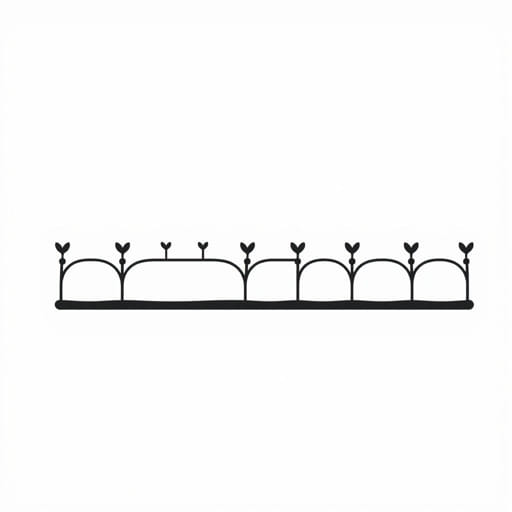Efficient water management is one of the most important aspects of successful farming, especially in regions where water resources are limited. Among the various irrigation systems available today, drip irrigation stands out as a precise and water-conserving method that delivers moisture directly to plant roots. The drip irrigation model is designed to minimize waste, promote healthy crop growth, and maximize productivity while reducing operational costs. Understanding how this model works can help farmers, agricultural planners, and students adopt or improve irrigation practices to suit different environmental and crop-specific needs.
What Is a Drip Irrigation Model?
A drip irrigation model refers to a systematic design or representation of a drip irrigation system, illustrating how water is distributed through a network of valves, pipes, tubing, and emitters. This model helps simulate, plan, and manage the efficient delivery of water to crops based on specific parameters such as soil type, crop requirements, land slope, and climatic conditions.
Key Components of a Drip Irrigation System
- Water Source: This could be a well, river, reservoir, or storage tank.
- Pump Unit: Pumps are used to generate pressure for the flow of water through the pipes.
- Mainline and Submain Pipes: These carry water from the pump to the field.
- Lateral Tubes: Flexible pipes that run along crop rows and carry water from submains to emitters.
- Emitters or Drippers: Small devices that release water slowly to plant root zones.
- Filter System: Removes debris to prevent clogging of emitters.
- Control Valves and Pressure Regulators: Manage water pressure and distribution across the field.
Working Principle of the Drip Irrigation Model
The model works on a simple principle: supplying water directly to the root zone of each plant, drop by drop, through a system of narrow tubes and emitters. This reduces evaporation and surface runoff, ensuring that plants receive the right amount of water exactly where it’s needed.
Step-by-Step Water Distribution
- Water is drawn from the source using a pump or by gravity flow.
- The water passes through a filter to remove ptopics.
- It travels through the mainline and submains to the lateral tubes.
- Emitters installed on the lateral tubes discharge water in small quantities directly to plant roots.
- Excess water does not accumulate, preventing waterlogging or soil erosion.
Advantages of the Drip Irrigation Model
This model offers numerous benefits to modern agricultural systems, especially in areas with water scarcity or high crop value.
- Water Efficiency: Drip systems use 30-50% less water than traditional methods.
- Reduced Weed Growth: Since water is targeted only at plant roots, weeds receive less moisture to grow.
- Improved Plant Health: Consistent and controlled watering promotes healthy root development.
- Fertilizer Management: Fertilizers can be delivered through the irrigation system, improving uptake and reducing waste.
- Labor Savings: Automated systems reduce the need for manual watering.
- Minimal Soil Erosion: Because water flows at low pressure and volume, it doesn’t disturb soil structure.
Types of Drip Irrigation Systems in the Model
Surface Drip Irrigation
In this type, emitters and tubes are placed above the ground. It’s suitable for crops with wide spacing or visible roots like vegetables, fruits, and flowers.
Subsurface Drip Irrigation (SDI)
Here, the tubes are buried beneath the soil. It is commonly used for row crops like cotton, corn, or sugarcane and offers better protection against evaporation and mechanical damage.
Gravity-Fed Drip Irrigation
This model is cost-effective and uses elevated tanks or reservoirs to provide water pressure without pumps. It’s ideal for small-scale farms in rural areas.
Designing a Drip Irrigation Model
Creating a functional model requires careful planning and customization based on field conditions and crop needs. The following are the basic steps:
1. Identify Crop Water Needs
Different plants require varying amounts of water. The model should calculate water requirements based on crop type, stage of growth, and local weather conditions.
2. Analyze Soil Type
Sandy soils drain faster and require frequent watering. Clay soils hold water longer and need less frequent irrigation. This affects emitter spacing and flow rate.
3. Map the Field Layout
Determine the slope, length of rows, spacing between plants, and number of plants per row to plan tubing layout.
4. Choose Equipment Size and Type
- Emitter flow rate: Typically 1-4 liters per hour.
- Pump capacity: Based on total water needed per hour.
- Pipe diameter: Depends on field size and water pressure.
5. Include Control and Monitoring Tools
Modern drip irrigation models include sensors, timers, and moisture meters to monitor system performance and schedule watering precisely.
Challenges in Implementing Drip Irrigation
Despite its advantages, there are certain limitations to be considered:
- Initial Setup Cost: Equipment and installation can be expensive for small-scale farmers.
- Maintenance: Emitters and filters require regular cleaning to prevent clogging.
- Technical Knowledge: Proper operation and troubleshooting may require training.
- Damage Risk: Rodents, UV exposure, or machinery can damage the tubing.
Applications of Drip Irrigation Model
The model is widely used in a variety of agricultural sectors:
- Vegetable Farms: Tomatoes, peppers, onions, and lettuce benefit from consistent moisture.
- Orchards: Citrus, grapes, mangoes, and pomegranates are irrigated efficiently through this method.
- Greenhouses: Controlled environments use drip systems to ensure precise watering.
- Row Crops: Corn, soybeans, and cotton farms increasingly adopt subsurface systems.
The drip irrigation model is a proven and sustainable solution for modern agriculture. By understanding how this system functions, its components, and how to design it efficiently, farmers can optimize water usage, improve yields, and reduce labor and fertilizer costs. As water scarcity becomes a growing concern globally, adopting and scaling drip irrigation models could be vital in ensuring long-term food security and environmental conservation. Proper planning, regular maintenance, and adapting to local conditions will ensure that the system delivers its full potential for farms of all sizes.
